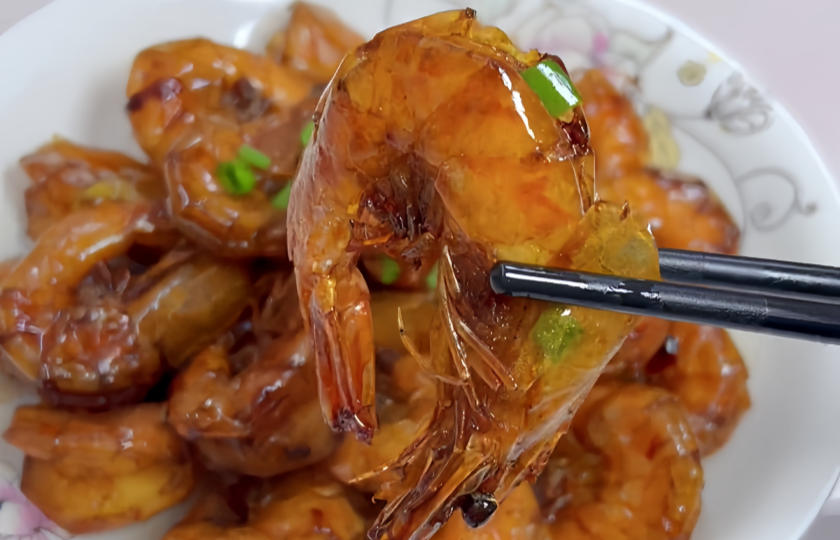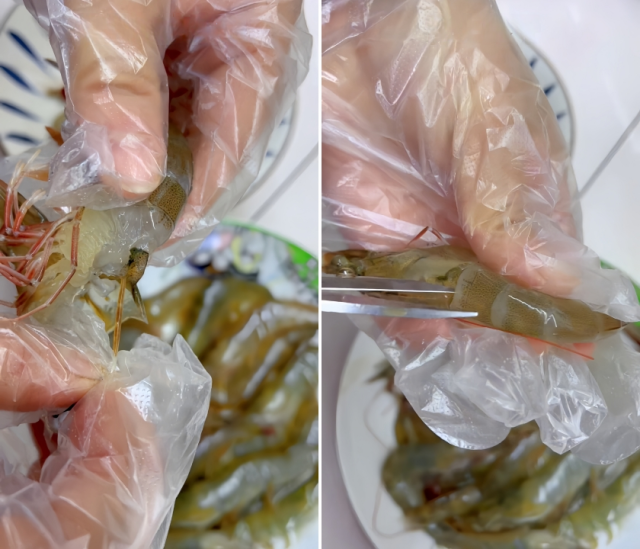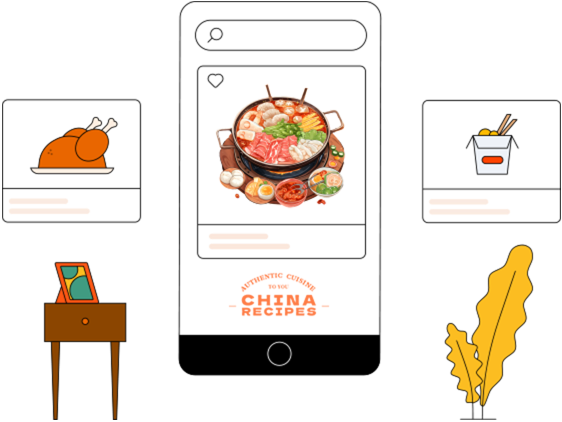Stir-fried Shrimp

Does your homemade stir-fried shrimp always seem to miss something? Don't worry, follow this tutorial and learn some practical tips to easily master this delicious dish.
What are the characteristics of this stir-fried shrimp dish?
The most fascinating aspect of stir-fried shrimp is its texture changes:
First, you'll feel the crispy shrimp shell, then the springy and tender shrimp meat, and finally, the flavors develop in layers, starting from salty and fresh, evolving to slightly sweet, and finally, the addition of a hint of vinegar enhances the taste, making the whole dish extremely appetizing.
How to choose the size of the shrimp?
For stir-fried shrimp, a crispy shell and springy meat are desired. It is recommended to choose medium-sized shrimp that are 8 - 10 cm in length (such as tiger prawns or river shrimp).
Small-sized shrimp (5 - 7 cm): They are easy to fry through, but the meat can easily become tough. The frying time needs to be shortened to 30 seconds.
Large-sized shrimp (over 10 cm): It is difficult to separate the shell from the meat. You can cut the shrimp tendon (make a light cut at the connection of the head and tail) to help the shrimp absorb the flavor.
Frozen shrimp: Choose the headless and shell-on frozen fresh variety. After thawing, the size will shrink by about 15%, so make sure to account for this.
It's best not to use peeled shrimp or very small sakura shrimp - you'll miss the pleasure of sucking on the shell, and the meat is prone to becoming rigid when exposed to high heat.
Alternative recommendations
You can use black tiger shrimp at 16 - 20 per pound, as well as blue-tail shrimp and brown shrimp as substitutes.

The kitchen utensils needed
Wide-mouthed wok
Choose an iron wok or non-stick wok with a thick bottom. The depth should be at least 8 cm. The wide-mouthed design allows the shrimp to be spread out flat and heated evenly. If there is no dedicated wok, a frying pan can be used as a substitute, but when frying shrimp, it is necessary to operate in two batches.
Ladle or frying basket
The fried shrimp need to be quickly scooped out to drain the oil. A ladle with fine holes is the most convenient. In an emergency, chopsticks can be used to pick out the shrimp, but remember to place kitchen paper on the plate to absorb the oil.
Kitchen scissors
Essential for dealing with shrimp veins and whiskers. Ordinary scissors can also be used, but they should be disinfected first (scalded with boiling water or wiped with alcohol). Rinse immediately after cutting to prevent rusting.
Long-handled spatula
Silicone spatulas or wooden spatulas are less likely to scratch the wok and shrimp shells when stir-frying. If you don't have one, use long chopsticks to stir. The movements should be fast to avoid burning the sauce.
Anti-scald tools
A splash guard or long-sleeved gloves are very important - shrimp will splash when put into hot oil. In an emergency, the lid of the pot can be placed obliquely to block the oil, but lift it to let air in after at most 3 seconds each time.
INGREDIENTS
Main Ingredients
-
·500g of shrimp (remove the shrimp veins and whiskers, cut open the back of the shrimp)
Additional Ingredients
-
·10g of scallions (cut into sections)
-
·10g of ginger (sliced)
-
·10g of garlic (sliced)
Seasonings
-
·1 teaspoon of salt
-
·1 teaspoon of sugar
-
·10ml of light soy sauce
-
·5g of oyster sauce
-
·15ml of cooking wine
-
·1 teaspoon of vinegar
-
·An appropriate amount of oil (for frying shrimp)
COOKING STEP
Step 1
First, clean 500g of shrimp thoroughly, remove the shrimp veins and whiskers, and cut open the back of the shrimp along the middle. Set aside.

Step 2
Add an appropriate amount of oil to the pot. When the oil is hot, put the shrimp into the pot and fry them over medium heat until both sides of the shrimp turn golden brown.

Step 3
Add 1 teaspoon of salt for seasoning and stir well. After the shrimp shells rise slightly, take out the shrimp and set aside.

Step 4
Leave a little oil in the pot. Add scallion sections, ginger slices and garlic slices and stir-fry until fragrant.

Step 5
Add 1 teaspoon of sugar, 10ml of light soy sauce and 5g of oyster sauce, and stir well.

Step 6
Pour in 15ml of cooking wine, then put the fried shrimp back into the pot and stir well to allow the shrimp to absorb the seasonings.

Step 7
Finally, add 1 teaspoon of vinegar, stir a few times until the flavor is well - distributed, and then remove from the heat and serve.

More recipes worth trying
Lunar New Year feast: General Tso's Chicken
Recipe Tips
Secret to Crispy Shells
When frying shrimp, the oil temperature should reach 180°C. Place the shrimp in a single layer in the pot to avoid piling. Fry each side over medium heat for 45 seconds until the shells start to bubble. After taking them out, raise the oil temperature to 200°C and refry for 10 seconds to force out the excess oil.
Keep the Meat Tender
After cutting open the back of the shrimp, press dry the moisture with kitchen paper. Before frying, sprinkle a thin layer of starch and pat gently to form a protective layer that reduces water loss.
Balance of Sweet and Sour
Pour the vinegar along the edge of the pot before taking the dish off the heat. The high temperature will stimulate the sour aroma without excessive evaporation. For those who prefer sweeter flavors, add half a spoon of maltose instead of granulated sugar to thicken the sauce and enhance the luster.
Upgrading of Spices
When sautéing scallions, ginger, and garlic, add 1 star anise or 2 bay leaves to make the Jiangsu and Zhejiang flavor more prominent. For those who like spicy food, add 2 dried chili peppers to fry in the hot oil at the beginning. Remove the seeds to reduce the dryness.
Disposal of Leftover Oil
Strain the oil used for frying shrimp and refrigerate it. It can be used to stir-fry greens or fry tofu within 3 days, imparting a natural seafood flavor.
Emergency Substitutions
When there is no oyster sauce, mix fish sauce and honey in a 1:1 ratio. If cooking wine is in short supply, you can use white wine plus 1/4 lemon juice to remove fishy smell and enhance freshness.
What Side Dishes to Serve With
Cold Shredded Lettuce/Cucumber Rolls
Crispy and refreshing vegetables can help relieve greasiness! Shred the lettuce and soak it in ice water for 10 minutes, then simply toss it with salt, white vinegar, and sesame oil. Use a vegetable peeler to shave the cucumber into thin slices and roll them up, then drizzle with a little honey mustard sauce. It's sweet and appetizing.
Garlic and Olive Oil Pasta
Use the oil left in the pot after boiling shrimp to directly stir-fry the pasta! Add sliced garlic, chopped parsley, and lemon zest to the cooked pasta, and combine it with the sauce of stir-fried shrimp. The aroma of shrimp oil will seep directly into the noodles (saving time and being flavorful, perfect for a lazy person's dinner).
Creamy Corn Chowder
Sweet corn pairs extremely well with the umami of shrimp! Blend canned corn with milk, and after boiling until thick, sprinkle with black pepper. The thick texture can balance the saltiness and aroma of the shrimp, especially suitable for fried shrimp with a rather dry shell.
Roasted Brussels Sprouts
A common side dish in European and American supermarkets. Cut the Brussels sprouts in half, brush with olive oil, sprinkle with sea salt, and bake at 200°C for 15 minutes until the edges are crispy. The slightly bitter and sweet-aftertaste flavor is unexpectedly harmonious with the sauce flavor of stir-fried shrimp.
Perilla and Plum Rice Balls
An Asian-style mix! Add a spoonful of plum sauce to the rice while cooking, wrap it in perilla leaves and shape it into rice balls. The sweet and sour taste can highlight the freshness and sweetness of the shrimp, and it's convenient to eat cold and take out for a picnic.
Variations
Curry Stir-Fried Shrimp
Add curry powder or curry paste when reducing the sauce at the end. This will give the shrimp a unique exotic flavor. This method is particularly popular among my Western customers. The aroma of the spices blends perfectly with the freshness of the shrimp.
Spiced Salt Stir-Fried Shrimp
This is one of my personal favorite versions. Instead of stir-frying the fried shrimp with sauce, sprinkle them with a special spiced salt powder. I add some five-spice powder to the spiced salt to enhance the aroma level.
Garlic Oil Stir-Fried Shrimp
Based on the original recipe, use a large amount of sliced garlic or minced garlic. At the end, drizzle some hot oil to sauté until fragrant, making the garlic flavor more intense. This version is particularly appetizing and goes well with drinks.
Spicy Stir-Fried Shrimp
Add an appropriate amount of dried chili peppers and Chinese prickly ash to make a Sichuan-flavored version. Remember to sprinkle a handful of crushed peanuts at the end. This not only adds texture but also balances the spiciness.
Sweet Sauce Stir-Fried Shrimp
In this version, add a bit more sugar and oyster sauce. At the end, drizzle a little sesame oil. The taste is sweeter, making it very popular among children.
Storage
Put the remaining stir-fried shrimp in a sealed container and refrigerate. It can be stored for up to 3 days. I don't recommend freezing leftovers.
For reheating, you can quickly heat them on the stove or in the microwave until they are fully heated.
FAQs:
You can insert a chopstick into the oil. If fine bubbles form around the chopstick, it is approximately this temperature.
If you're worried about over-frying, you can take out the shrimp immediately after they change color. Since they will be stir-fried with the sauce later, they will continue to cook through.
Because frozen shrimp have more moisture, it is recommended to marinate them with salt for 10 minutes to remove the excess moisture. Shorten the frying time a bit when cooking.
It is not recommended to use olive oil as it is easy to burn and not suitable for high-temperature cooking.

















